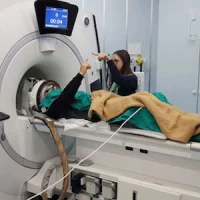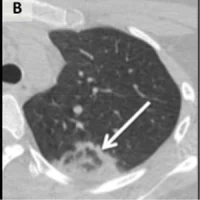Mammography screening has been helpful in lowering breast cancer mortality, but there is ongoing debate on how often women should be screened. A new study has found that biennial mammography screening is associated with advanced-stage breast cancer compared with annual screening.
Additionally, women undergoing screenings every two years tended to have more aggressive treatment, according to the research presented next week at the annual meeting of the Radiological Society of North America (RSNA).
Researchers hope these findings will help allow informed decision-making regarding frequency of breast cancer screening.
Professional societies and government agencies acknowledge the value of mammography in breast cancer treatment and prevention, but there is disagreement regarding how often women should get a screening mammogram. The National Comprehensive Cancer Network recommends annual screening beginning at age 40 for women at average risk for breast cancer. For the U.S. Preventive Services Task Force, screening every two years beginning at age 50 is sufficient for most women.
"These differing recommendations lead to confusion for both referring physicians and patients," notes Sarah Moorman, MD, of the Department of Radiology at Michigan Medicine in Ann Arbor, who is co-author of the study.
Dr Moorman and colleagues compared tumour characteristics and treatment regimens among women who underwent annual mammography versus biennial screening. The two groups had no significant differences in baseline characteristics such as age, menopausal status, hormone replacement use, family history and race.
The study included a total of 232 women, ages 40 to 84, who were diagnosed with breast cancer. Of the total, 200 (86%) underwent annual screening, defined as once every nine to 15 months. The remaining 32 had biennial screening, or once every 21 to 27 months. Mean age at cancer diagnosis among 232 patients was 62. Almost three-quarters of the cancers were invasive.
The study's key findings include:
- 43.8% of women in the biennial screening group had late-stage cancers, compared with only 24.0% of women in the annual screening group;
- Interval cancers, or cancers found between screenings, were more prevalent in the biennial screening group (>30%), compared with only 10.5% of women who had annual screening; and
- Biennial screening was associated with larger tumour size.
In addition, women who had biennial screening tended to have more aggressive treatment, such as chemotherapy and dissection of the axillary lymph nodes, where cancer from the breast often spreads, according to the researchers.
"There were trends towards less frequent axillary lymph node dissection and less frequent use of chemotherapy with annual screening compared with biennial screening," Dr Moorman points out.
Source: RSNA
Image credit: RSNA
Latest Articles
RSNA breast screening annual biennial treatment
A study on the different effects and outcomes of breast screening.










